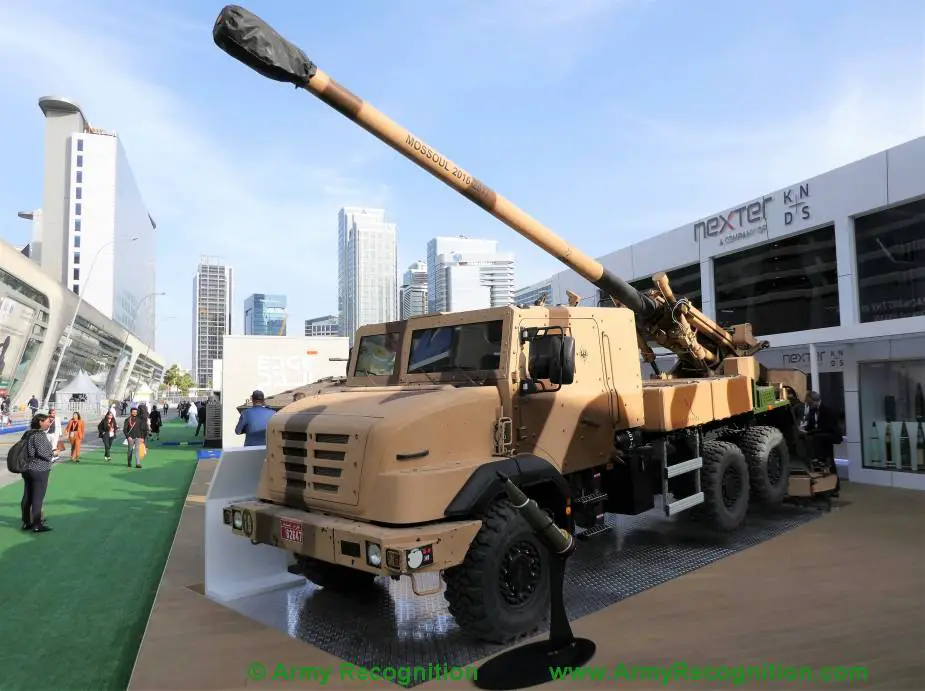According to the latest report issued by SIPRI (Stockholm International Peace Research Institute), European countries nearly doubled their imports of major arms, seeing a 94% increase between 2014–18 and 2019–23. However, Asia, Oceania, and the Middle East were the primary destinations for arms, hosting nine of the top ten largest arms importers. In this period, the United States elevated its arms exports by 17%, while Russia's exports were cut in half, making Russia the third-largest arms exporter, closely trailing France. Overall, the volume of global arms transfers dipped by 3.3%.
Follow Army Recognition on Google News at this link

KNDS/Nexter's CAESAR self-propelled howitzer is a major asset for French arms exports, mostly since the Russian invasion of Ukraine (Picture source: Army Recognition)
The U.S. was the leading supplier to European states, accounting for 55% of their arms imports in 2019–23, a significant increase from 35% in the previous five-year period. Dan Smith, SIPRI Director, noted the U.S.'s major role in European arms imports, which also reflects Europe's significant military–industrial capabilities, making it responsible for about one-third of global arms exports. European NATO states' import strategies, heavily influenced by maintaining trans-Atlantic ties and various military and cost considerations, may evolve with changes in these relationships.
U.S. and French arms exports saw considerable growth, while Russian exports saw a dramatic decline. The U.S. increased its share of global arms exports from 34% to 42%, delivering arms to more countries than ever before. France, with a 47% increase in arms exports, surpassed Russia to become the second-largest arms exporter, primarily serving Asia, Oceania, and the Middle East. Meanwhile, Russia experienced a 53% fall in its arms exports, with its market share significantly diminishing across its traditional territories.
Europe's significant rise in arms imports is highlighted by Ukraine becoming the largest European arms importer and the fourth globally, supported by military aid from over 30 countries. The increase in U.S. arms exports to Europe, along with greater demand for air defense systems spurred by conflicts, suggests continued high levels of European arms imports.
Asia and Oceania received the largest share of arms transfers, with the U.S. becoming the leading supplier to the region, surpassing Russia and China. India remained the top arms importer, with notable shifts in its sourcing patterns. The Middle East also imported large volumes of arms, predominantly from the U.S. and Europe, with Saudi Arabia and Qatar being among the top importers.
In contrast, arms imports to Africa declined, with significant drops in North African countries. Sub-Saharan Africa saw a decrease in arms imports, with China surpassing Russia as the main supplier. Other notable trends include a rise in long-range missile interests and varying import levels across different regions, reflecting a complex global landscape of arms transfers and military alliances.
Defense News March 2024















